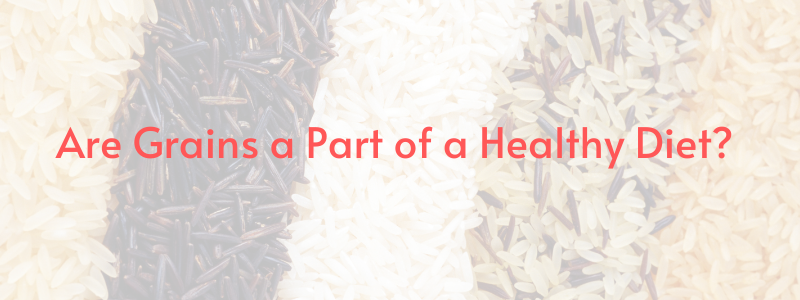Today I want to talk about something I get asked about a lot: grains. Grains have been hailed as the answer to heart disease (fiber!) and the villain at the root of digestive distress and a leading driver of insulin resistance. So what’s the real story? What should be their place in your diet?
Well, as most things when it comes to nutrition, it depends on you, and it depends on the grain. Let’s look at this from a few angles.
Nutrient Density and Grains
The goal with most of your food should be to consume food that’s as nutrient-dense as possible. And the fact is that grains are, by nature, less nutrient-dense than fruits, veggies, meat, seafood, nuts/seeds, and dairy. But it doesn’t mean all grains are devoid of nutrients and they do provide other benefits, namely a good source of carbohydrates and fiber, which is essential to feeding our gut bacteria. I’m going to discuss the benefits and drawbacks of specific grains, but also keep in mind that while this can be a staple in your diet, it should not overtake your diet, replacing good quality fruits, veggies, meat, and other nutrient-dense foods.
Whole Grain or Whole Grain?
No, that’s not a typo. There’s a huge difference when it comes to eating grains in their whole form (think steel-cut or thick cut rolled oats, rice, or sweet corn kernels) compared to eating “whole grain” bread, or pasta “made with whole grains. Yes, these grains started off whole, as in maybe the bran wasn’t removed, but they’ve still been ground down into a flour to create the “whole grain” product.
All that to say, eating whole grains is different than eating whole grain flour. What’s the difference? Whole grains are in their natural form, with every part of the grain in tact. This means it takes your body longer to break it down and absorb the sugars from the grain. This also means that there’s more fiber for your gut microbiome to consume. Whole grain flour, on the other hand, may have more fiber than white flour, but it’s already been processed and broken down, which means that your body has a lot less work to do to break it down and digest it. This results in fast absorption and a huge spike in blood sugar. In fact, whole grain bread can spike your blood sugar higher than eating 2 tablespoons of sugar!
What about the differences between the grains? There’s a big difference. Each grain has different benefits, and some have big negatives, so let’s break down a few of the most popular grains and why you may or may not want to consume them regularly.
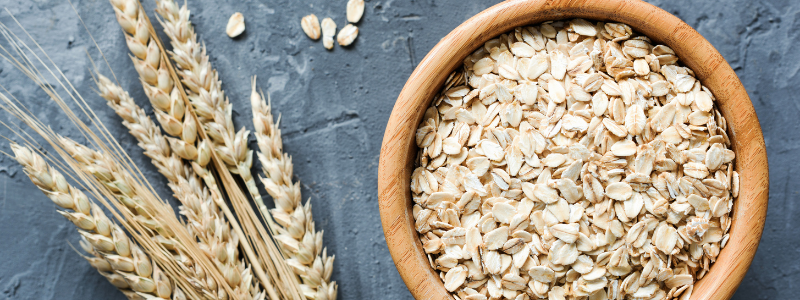
Oats
Hailed for their heart-heathy nature, oats have historically had a really great reputation, and for good reason. They’re high in a really beneficial fiber to the gut microbiome, and they’re a slow-burning carbohydrate, meaning they don’t tend to spike our blood sugar. So they have high satiety and keep us full for a longer period of time. However, they’re mostly carbohydrate, so it’s really important to add protein and some fat into your meal when you are eating oats for breakfast. Choose steel-cut or thick-cut rolled oats/old-fashioned oats for slowest absorption. It’s also important to buy them organic because of heavy pesticide use, as well as gluten-free, if you avoid gluten, due to high cross-contamination.
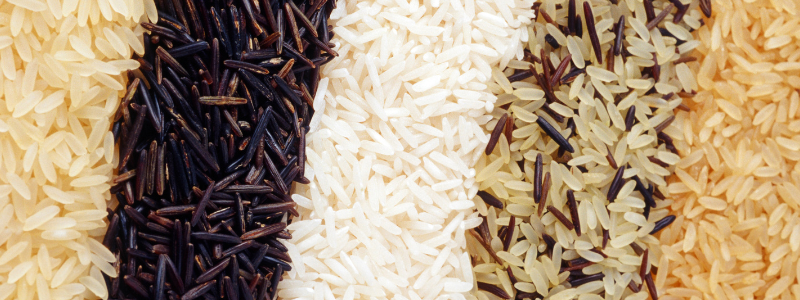
Rice
There has been a constant battle between white and brown rice; white rice is a pretty clean carb, but absorbs into the blood stream more quickly, elevating blood sugar, and brown rice, while higher in fiber and nutrients, has gotten a bad reputation due to its higher levels of arsenic (found in the outer layers of the grain). In my mind, if you’re balancing the macronutrients on your plate, I give a slight edge to brown rice because your gut microbiome loves it. But if you love white rice, that’s perfectly fine too. That said, I encourage you to try out red rice or black forbidden rice. These colorful rices are not only a good source of fiber and carbs, but they pack an antioxidant punch too and up your nutrient-density score. Whatever rice you choose, buying organic and getting your rice from California is important to reduce your arsenic intake. Lastly, cooked and cooled rice creates resistant starch, which we don’t digest, but our gut microbiome loves to eat, so eating it in this form can be a really beneficial way to consume rice as well.
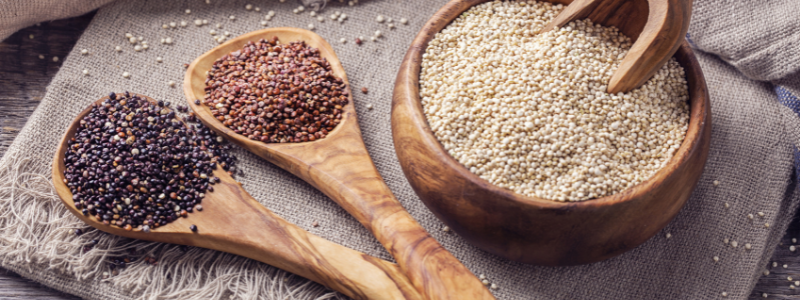
Pseudo-Grains
Quinoa, amaranth and buckwheat fall under the category of pseudo-grains. They’re actually non-grass seeds that are used in the same way that cereal grains (grasses) are. There has been some debate over whether these grains are good for our guts, with some studies showing increased intestinal permeability and some showing an increase of beneficial gut bacteria. So I recommend eating these if they make you feel good, and avoiding if they don’t. Pretty simple!
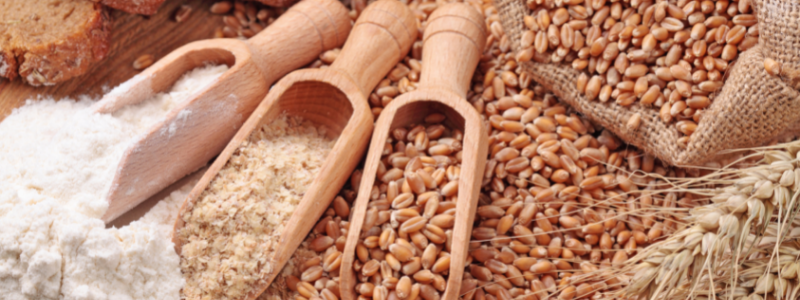
Wheat and other Gluten-Containing Grains
The one you’ve all been waiting for with fingers-crossed! This one is tricky, and whether it’s good to eat gluten is a multi-layered issue. Grains that fall under this category include: wheat, spelt, farro, bulgar, barley and rye.
Here are the truths about gluten:
- Gluten causes intestinal permeability (leaky gut) for everyone.
- The amount it causes is directly related to how much zonulin your body releases in response to consuming gluten, which varies wildly.
- Genetics play a huge role in this. There are two genes that predispose you for Celiac disease, which makes you severely intolerant to gluten and creates a whole cascade of other health issues.
- The vast majority of the wheat we consume in the US is dwarf wheat, which was bred for higher crop yield and contains more gluten. This is not the wheat our great-grandparents ate.
- Our ancestors also fermented their breads, making sourdough and rye, and the majority of our bread today uses quick rise yeast instead. Some people who can’t tolerate commercially prepared breads do well with sourdough.
- Non-organic wheat is sprayed with glyphosate before harvesting, which causes intestinal permeability, and may be one of the root causes of gluten sensitivity in some people.
- Gluten-containing grains haven’t been shown to be of much benefit to the gut microbiome. The grains mentioned above are the ones to focus on for gut health.
Again, when we eat flours, even whole-wheat flours, it spikes our blood sugar. Given this information, it’s important to make sure if you decide to include wheat bread in your diet to balance it with protein and fat. And my second recommendation is to limit the amount you have; it doesn’t have to be part of each meal, and often replaces foods that would give us a lot more nutrients.
For my clients I almost always suggest they do a trial period with no gluten during the gut-healing protocol, and add it back later to see how they feel. This allows the gut to heal completely without the inflammatory food, and allows each person to discover individually how it affects them. I will caveat this by saying that many people who are genetically predisposed to celiac do not have any symptoms, so I always suggest to err on the side of caution and eat gluten in moderation, if not minimally.
Should Grains Be Part of Your Diet?
So where do I stand on grains? I think unprocessed, mostly gluten-free grains (preferably oats, rice or pseudograins) are a healthy part of most people’s diets, if you tolerate them well. Think one serving a day, so as not to crowd out other, more nutrient-dense forms of food. Overconsumption of grains is, in my opinion, at the root of many of us being “over-fed and under-nourished.”
I do want to mention corn, as it’s a common replacement for gluten. I think we over-consume corn in the way we overconsume wheat, but I would treat it like something you can eat somewhat neutrally, on occasion. And I’m talking about processed corn in the form of tortillas or chips; sweet corn on the cob is just fine to eat seasonally.
Lastly, it’s unrealistic to never eat processed grains or food made with flour, so gluten-free organic rice noodles or crackers are a good addition to your diet as well when you want a better version of your favorite foods.
I don’t have any hard and fast rules here; it all comes back to listening to your body and consciously prioritizing more nutrient-dense foods.

